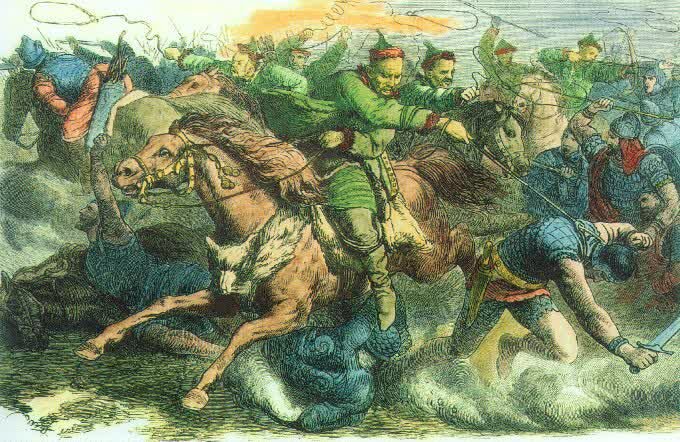These following are facts about the Huns which will give you addition information . Between the 1st century AD and the 7th century, there were a nomadic group of people who have lived in Eastern Europe, the Caucasus and Central Asia called the Huns. The first report noted that they lived in the east of the Volga River, in an area that was part of Scythia at the time. Let’s explore more interesting facts about the Huns through the list below.
Facts about the Huns 1: The Huns
The term Hun was used to refer to groups over wide and often discontiguous geographic regions, referred to by disparate sources (including Indic, Persian, Chinese, Byzantine, Roman). After the Hun era in Europe, the term “Huns” used by Greek and Latin to refer tribal groups whom they placed in the Black Sea region.
Facts about the Huns 2: Hun and Xiongnu
In the 18th century, the French scholar Joseph de Guignes became the first to propose a link between the Huns and the Xiongnu people. Xiongnu were northern neighbours of China in the 3rd century BC. He focused on the genealogy of political entities and gave little attention to whether the Huns were the physical descendants of the Xiongnu.
Facts about the Huns 3: History
The Huns first appeared in Europe in the 4th century. They show up north of the Black Sea around 370. They crossed the Volga River and attacked the Alans. Jordanes reports that the Huns were led at this time by Balamber while modern historians question his existence, seeing instead an invention by the Goths to explain who defeated them. Find more facts about the Holocaust here
Facts about the Huns 4: Appearances
Priscus described the Huns as short of stature, with a broad chest and a large head; his eyes were small, his beard thin and sprinkled with grey; and he had a flat nose and tanned skin, showing evidence of his origin.
Facts about the Huns 5: Clothes
The Huns were described to wear pointed caps, trousers or leggings made from ibex skin, and either linen or rodent skin tunics. Historian reports that they wore these clothes until the clothes fell to pieces. Priscus describes Attila’s clothes as different from those of his men only in being clean.
Facts about the Huns 6: Warfare
Bow and Javelin are the common warfare the Huns used. Early writers such as Ammianus (followed by Thompson) believed that they used primitive, bone-tipped arrowheads. The Huns also fought using iron swords and lassos in close combat. The sword used was a long, straight, double-edged sword of early Sassanian style.
Facts about the Huns 7: Language
There were various languages spoken by the Huns such as Hunnic, Gothic, Latin, Greek and various tribal languages.
Facts about the Huns 8: Claims of Hunnic Origins
Many nations and ethnic groups have tried to assert themselves as ethnic or cultural successors to the Huns. For instance, the Nominalia of the Bulgarian Khans may indicate that they believed that they descended from Attila. The other claims come from Magyars (Hungarians) which lay claim to Hunnic heritage. Find more facts about the Hopi Tribe here
Facts about the Huns 9: Legends
The Huns legend was transmitted orally among Germanic peoples and is an important component in the Old Norse Völsunga saga and Hervarar saga and in the Middle High German Nibelungenlied. These stories all portray Migration Period events from a millennium earlier.
Facts about the Huns 10: Reference to Germans
The term “Hun” from Kaiser Wilhelm II of Germany’s speech was used for the Germans by British propaganda during World War I. This usage, emphasizing the idea that the Germans were barbarians, was reinforced by Allied propaganda throughout the war.
Hopefully, those interesting facts about the Huns will give you more knowledge and information.





